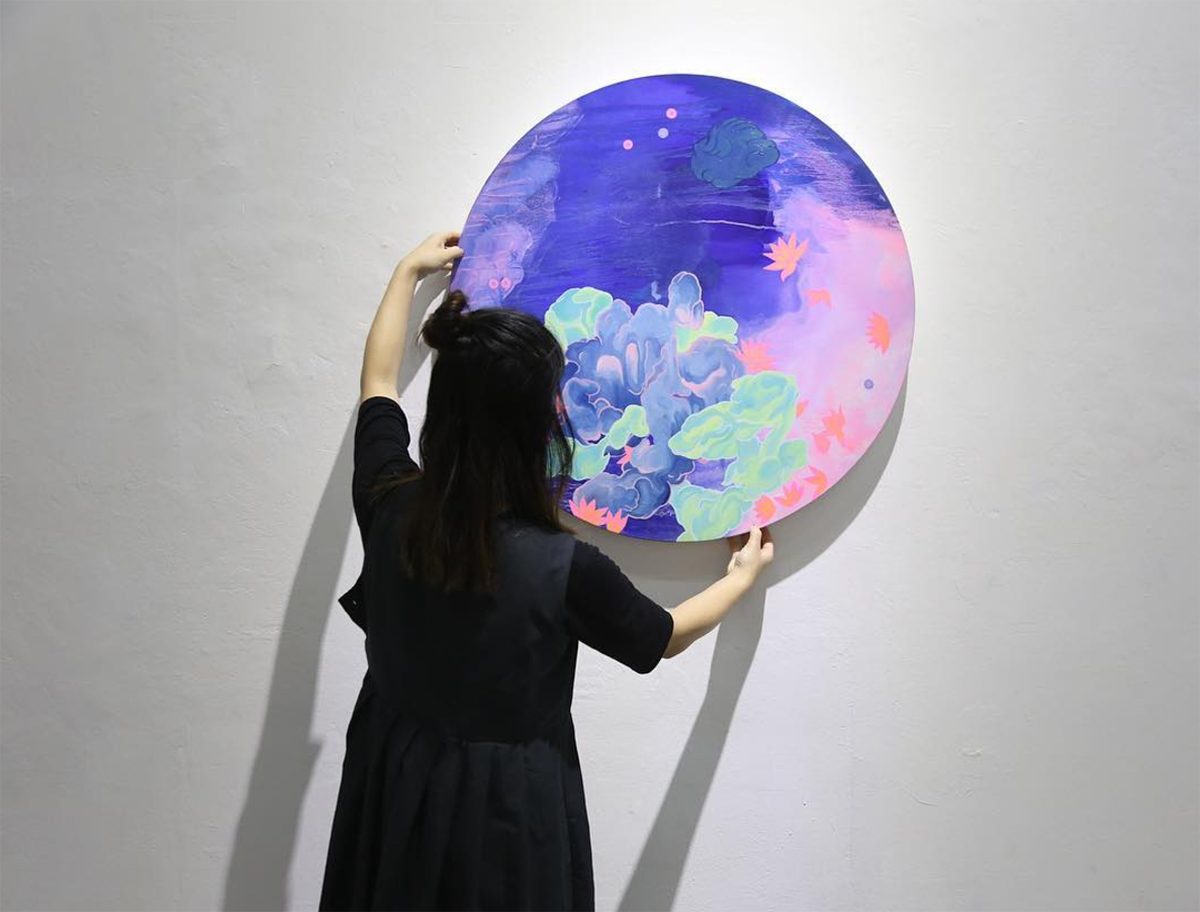“Think you’ve got what it takes?” the call-out on the Triple J website asks. They’re on the hunt for a new film critic after ‘That Movie Guy,’ Marc Fennell, stepped down after 11 years in the role. Fennell created a fine legacy at Triple J and a standard for how the radio station approaches film coverage. On the surface, his vacancy leaves a sweet, coveted gig. The role is changing to include films, TV and streaming. And it pays: $250 per review, once a week. That equates to, roughly, $12,000 a year before tax.
Full-time critics are rare in Australia, so it’s questionable if anyone has ever thrived on their critical output alone without supplementing their income elsewhere. Sure, the Triple J job pays — it’s better than nothing — but not significant enough to empower an emerging critic to have the freedom to hone their craft. Triple J claims to have over two million listeners per week in the five capital cities who will hear one review replayed for a week across various times of the day. Considering the number of new film releases, TV and streaming options available, it’s a job with limitations. If the critic were able to file more often, and be paid accordingly, it would change the nature of the role dramatically.
To make matters worse, Australian films will have to compete with blockbusters and streaming giants for the critic’s attention to be the subject of the review of the week (a universal problem in the arts). Unless there’s a mandate to prioritise local films or TV shows in any given week, as Triple J does with the Australian music on their playlist, the national youth broadcaster is missing the point of a fundamental part of its programming and very existence. Given this is a key arts criticism position with a large audience, serious consideration needs to be made about how the new critic is integrated into the station’s programming.
A lot of writers and broadcasters have the necessary skillset — and that’s just it, criticism is a profession that requires a skillset of film knowledge, analytical skills and the ability to communicate. The real question is: how did we get to a point where the national youth broadcaster isn’t investing properly in professional screen criticism? The answer is partly tied up in budget woes at the ABC, intensified by the new Managing Director, Michelle Guthrie, who seems to be stalking the budget sheets at the national broadcaster like a masked assailant in a slasher movie. But alongside the massive cuts to arts coverage at Fairfax, it also reflects a more profound crisis in critical writing and broadcasting: a falling away of understanding in how elemental arts criticism is in both the media and the arts in Australia.
The call-out was angled as a competition for non-professional critics, with the lure of exposure. One thousand applied and the field narrowed to five before the victor, Amelia Navascues, was announced yesterday. Navascues has experience in community radio, perfect for a role where the presenter must act as a scriptwriter, editor and sound mixer (technical roles which, in other parts of the network, are performed by specialists). Triple J has found a way to crowdsource an emerging broadcaster at a budget price.
Critical evolution
Evidently, Triple J had no interest in looking for more experienced arts critics. Though this approach jives with how Fennell got into the role as a Triple J fan who worked hard and turned a break into one of the longest running film criticism tenures in Australia, it devalues the critic as a trusted, experienced voice. There are many professionals who didn’t train or aspire to be critics who fell into the role because an editor or producer was looking for someone to cover a beat. One of them is famed critic Roger Ebert, who studied to be a journalist, mostly covering sports early in his career, until he was assigned to write film reviews and the rest is history. Margaret Pomeranz was working as a producer at SBS and got paired with David Stratton on The Movie Show after an opportunity to audition came up after all the female critics who tested fizzled. There’s no sign that the incoming Triple J reviewer will be trained or mentored in criticism. How are they meant to navigate their way to becoming an impartial voice?
Devaluing the professional critic
This is just the latest development in a growing trend where editors and producers aren’t looking for experienced critics to provide arts coverage. The effect is a worrying distortion of cultural discourse. Schwartz Publishing, a key company in the cultural landscape, does not utilise professional film critics in either of its major titles, The Monthly or The Saturday Paper. The latter was recently left exposed by a misguided review of Get Out by author Christos Tsiolkas, who couldn’t comprehend the way writer and director Jordan Peele took horror themes and used them to satirise the myth of a post-racial America. Tsiolkas got stuck on a comparative loop with The Stepford Wives, a film Peele acknowledged as an influence on his film in countless interviews ahead of its release. Get Out is one of the most critically acclaimed films of the year so far and still fair game for critical assessment, but Tsiolkas’ comments were widely seen as tone-deaf, culturally unaware and over-opinionated, with the purpose of taking down a well-reviewed film.
The casualised critic
The handling of the Triple J gig is also indicative of the freelancing and casualisation of writing and broadcasting jobs for the professionally trained. A full-time critic I spoke with who did not want to be named noted that Triple J is offering a great opportunity… if you can cobble together five other jobs that pay the same rate and you’re willing to live on choc-tops. This leads to a small group of critics hogging outlets that pay, which narrows the field of voices. Even if you start as an amateur, it takes a few solid years to develop a voice and level of trust with an audience, but it’s doubtful any outlet is going to have the attention span to sustain a new critical voice long enough to develop a level of respect that adds to the conversation about the arts in Australia. In an article published in The Citizen, “Is the Full-Time Critic a Dying Breed?”, it was claimed that there are only two full-time salaried critics left in Australia. Shortly after the article was published, a few full-timers contacted the author, Anders Furze, to add their names to the list. He told RealTime that only one hand was needed to tally the total. The major issue is of job security and stable working conditions for writers and broadcasters — of critics being spread thin and balancing multiple jobs in the pursuit of something that resembles a salary.
Australia has been flooded with local start-ups of huge mastheads like The Huffington Post, The Guardian, Buzzfeed and The New York Times. But to date, only The Guardian Australia has invested extensively in local arts criticism with a group of critics filing on a regular basis. The other outlets are happy with arts coverage from abroad; there is no value for them in financing local criticism. They might as well strike “Australia” from their titles.
Sound bites & click bait
More worrying is the idea that the national broadcaster doesn’t care. The impact of the loss of local, experienced critics curating the public conversation about the arts means that the dialogue is reduced to sound bites and click-bait headlines. Expertise and depth is no longer valued, and audiences for artists are no longer consistently developed. If Australian artists are creating new works and nobody is knowledgeable enough to write or broadcast intelligently about them, they drift into the void. To quote the food critic, Anton Ego from Ratatouille: “The bitter truth we critics must face is that in the grand scheme of things, the average piece of junk is probably more meaningful than our criticism designating it so. But there are times when a critic truly risks something, and that is in the discovery and defence of the new. The world is often unkind to new talent, new creations, the new needs friends.”
While criticism is diminished, made into a sport and reduced to hot takes, there remain plenty of voices and small publications trying hard to make it work, to make it matter. Criticism still matters, to artists and readers. The question is how to ensure it survives and flourishes for a wide audience in a threatened, under-resourced media and arts environment. Now is the time for publishers and broadcasters to create significant opportunities to reverse a trend in which critics become disenfranchised and reclassified as hobbyists.
See also in The Lifted Brow, a discussion between reviewers: Arts coverage in Australia: how fucked we really are.
–
Cameron Williams is the founder of The Popcorn Junkie https://thepopcornjunkie.com/, is a writer and film critic based in Melbourne and contributes to SBS Movies, Little White Lies and Radio National’s The Final Cut among others.
Why do we do what we do here at RealTime? The Monthly’s Anwen Crawford offered a highly articulate case for supported arts criticism after Fairfax announced cuts to culture coverage. Lauren thinks the issue is bigger than Fairfax, and speaks to a wider breakdown in the arts ecology and democratic journalism in Australia:
“Effective criticism is timely, and alert to the times in which it is made; it forms one strand of a wider public conversation that we are each entitled to join, by virtue of being alive. But in Australia we are all, increasingly, being denied participation in, and exposure to, art and arts criticism. The two go together, never mind the well-worn cliché that artists and critics are sworn enemies.”
How do you critique a war criminal’s paintings? His political legacy feels feeble but George W’s new book of paintings—oddly naïve, flat, juvenile portraits of war veterans—has been greeted nostalgically by NY Times critic Jonathon Alter as an act of political atonement. We wonder how tightly a critic can squeeze their conscience. Time to decry fake art?
“In the introduction to his new coffee-table book of oil paintings, Bush readily—perhaps pre-emptively—admits that he’s a ‘novice.’ Three years after leaving the White House, he set out to adopt the pastime of Winston Churchill, who painted to relieve the ‘Black Dog’ of depression. But age 66 is awfully late to achieve proficiency, especially for a man with a famously short attention span. Bush recalls playfully informing his first art instructor, Gail Norfleet, of his objectives. ‘Gail, there’s a Rembrandt trapped in this body,’ he told her. ‘Your job is to liberate him.’”
Don’t panic—get some real art on your phone screen. Sydney artist Louise Zhang’s Instagram is a delightful feed. She conflates Western and Chinese iconography in candy colours on circular, painted surfaces. Horror films contribute more recently to her visual language—but abstracted just beyond the figurative.
Listening to Blade Runner. This brilliant new video essay by Nerdwriter1 goes beyond an analysis of Ridley Scott’s film’s soundscape, including Vangelis’ classic soundtrack, to encompass a wider appreciation of how sci fi has sounded across the decades:
“A movie without its music is not the same movie. [In Blade Runner] the music isn’t laid over the top of the visuals, it’s baked into the DNA of the movie itself. Everything you hear—the score, sound design, dialogue—is tightly integrated with the others. This integration is really what separates Blade Runner from other science fiction films. After all, electronic music had been a staple of science fiction cinema for three decades going back to Bernard Herrmann’s use of the theremin in The Day the Earth Stood Still.”
Top image credit: Nerdwriter 1, video still courtesy the artist





